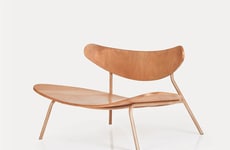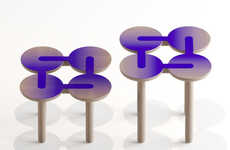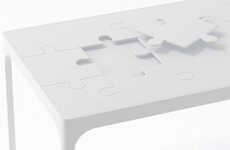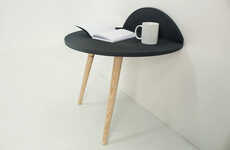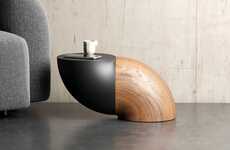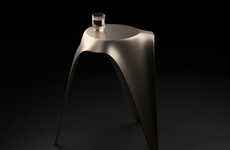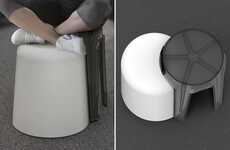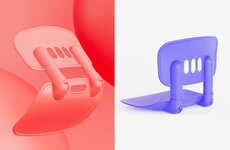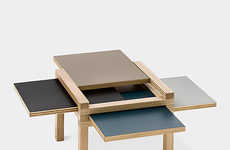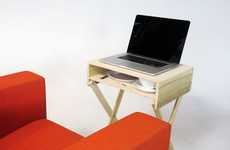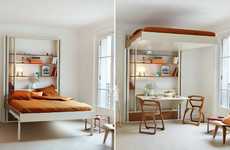
The Empathy Table by Jennifer Crupi Rests on People's Laps
Meghan Young — January 29, 2013 — Art & Design
References: jennifercrupi & neatorama
The Empathy Table breeds understanding between two individuals. It does so through its unusual design. A legless piece of furniture, the Empathy Table is purported to rest on the laps of the sitters, forcing them to sit in identical positions. As written by the mastermind behind it, "In this work, I seek to point out how one can show agreement with another by assuming the same posture."
Designed by Jennifer Crupi, an Associate Professor at Kean University, Union, New Jersey, the Empathy Table could be construed as quirky, but really it is a thoughtful creation that simply has an eccentric look. Essentially, the bottom of the table has been carved to encourage a comfortable cross-legged position while the surface remains stable so long as their arms rest on top of it.
Designed by Jennifer Crupi, an Associate Professor at Kean University, Union, New Jersey, the Empathy Table could be construed as quirky, but really it is a thoughtful creation that simply has an eccentric look. Essentially, the bottom of the table has been carved to encourage a comfortable cross-legged position while the surface remains stable so long as their arms rest on top of it.
Trend Themes
1. Legless Furniture - Opportunity for disruptive innovation in the furniture industry by reimagining traditional furniture designs and incorporating innovative and ergonomic elements.
2. Empathy Table - Opportunity for disruptive innovation in the design and hospitality industry by creating furniture that fosters empathy and connection through thoughtful and unconventional design.
3. Identical Positions - Opportunity for disruptive innovation in the healthcare industry by developing furniture that promotes better posture and ergonomic support for individuals with physical limitations.
Industry Implications
1. Furniture Industry - Disruptive innovation opportunities in the furniture industry to create unique and functional pieces that challenge traditional design principles.
2. Design Industry - Opportunity for disruptive innovation in the design industry by incorporating unconventional and empathetic design elements into products and spaces.
3. Hospitality Industry - Opportunity for disruptive innovation in the hospitality industry by incorporating furniture designs that enhance guest experiences and foster connections among individuals.
1.9
Score
Popularity
Activity
Freshness

